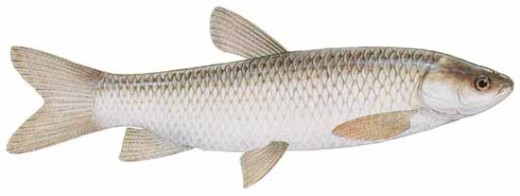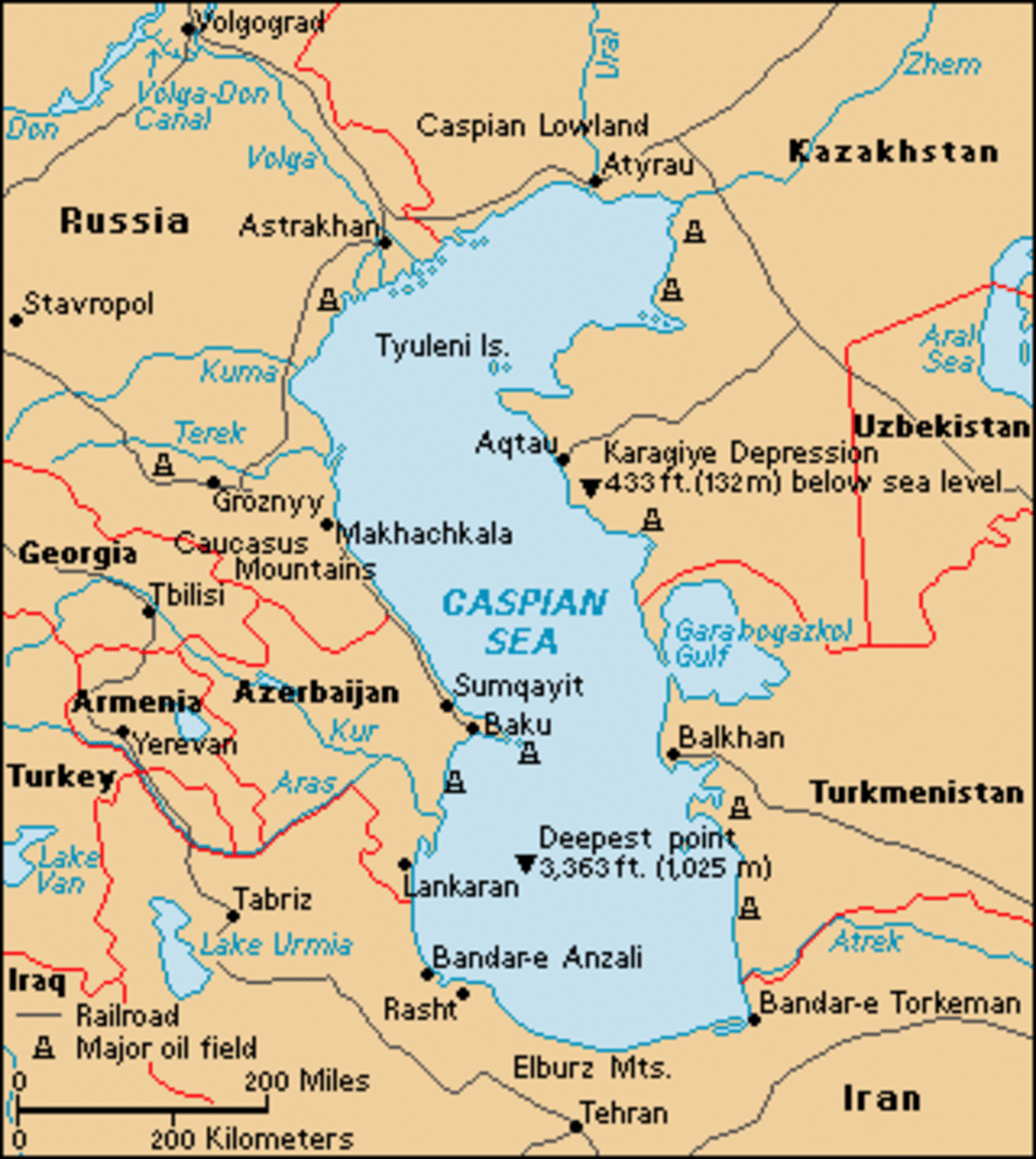The truth about Asian Carp in the Great Lakes
Different types of Asian Carp
Believe it or not, there are nine different varieties of Asian carp that have been introduced outside of their native environments.
Mud Carp (Cirrhinus Molitorella) - The Mud Carp are mostly found in China, just like most of these fish will. The interesting thing about Mud Carp is, they were originally introduced as a large part of the Chinese diet because the Common Carp was eaten by the emperor, meaning the common folk could not eat it.
Crucian Carp (Carassius Carassius) - The Crucian carp is a mid sized version of the Asian carp family, and is highly prevalent throughout Europe.
Gold Fish (Carassius Auratus) - Goldfish, now-a-days, are generally for pets, or decoration. Originally, the species was food fish as well, but during the Tang dynasty, they began to use the color mutated fish in decorative ponds, and by the Song dynasty, a selective breeding process was in full swing. They are very closely related to the Crucian Carp, but tend to be smaller.
Black Carp (Mylopharyngodon Piceus) - The Black carp can get big, bigger than 5 feet long, in fact. They originate in East Asia, and were bred for food and medicine purposes, and are considered one of the "Four famous domestic fish." They were originally brought to America because they eat snails and mussels, and America had a need for a fish to control these pests, in aquatic crops. It is illegal to release one of these fish into any body of water in the united states, even if it is a sterile version of the fish. Since 2007, the Black carp were put on the Injurious species list, and it is illegal to transport them, either sterile or fertile, in to the United States or across state lines, because it is believed that they are a danger to the species of Mollusks of the USA.
They have been found in the wild though, including fertile versions of the fish, specifically in and near the Mississippi river, in the White river in Arkansas, Osage river in Missouri and also in Indiana and Louisiana.
Bighead Carp (Hypophthalmichthys Nobilis) - The Bighead Carp are the most bred version of the Asian Carps. They grow large, as much as 4 feet long, and due to them being used as a food fish, are basically everywhere in the world. They were originally brought to America to manage plancton in sewage treatment plants. They inevitably have ended up in the wild and heavily populate the Mississippi river now.
Silver Carp (Hypophthalmichthys Molitrix) - Native to China and East Siberia, the Silver carp are endangered in their natural habitat, but are so heavily fish farmed, they are prolific throughout the world. Silver Carp are filter feeder fish, and were originally brought to America to help clean water in fish farms. They too have inevitably ended up in the wild and are considered a invasive species as well, due to their extremely high reproductive rates, they literally choke out other species of aquatic life.
Largescale Silver Carp (Hypophthalmichthys Harmandi) - Largescale Silver carp are native to Hainan and Vietnam. Very similar in appearance to the Silver carp, the Largescale tend to have a smaller window of habitable environments, they are a more tropical version. But are still considered by America, as an invasive species.
Common Carp (Cyprinus Carpio) - The Common Carp is native to Europe and Asia, but at this point has been introduced to every part of the world, except the poles. The domesticated version of this fish is considered to be highly invasive, and actually is considered one of the 100 most invasive species, even though the wild variety is on the vulnerable to extinction list.
Grass Carp (Ctenopharyngodon Idelle) - The Grass carp is also native to Eastern Asia. More pounds of Grass carp are produced every year, than any other fish. They were originally brought to America as a water cleaner as well. They are weed eater fish, and were introduced to the United States in the 1960's to help maintain fish farms, and was accidentally released into the wild very shortly after they got here.

Which Asian Carps are a concern to the Great Lakes?
Bighead Carp, Black, Silver, Largescale Silver and Grass Carp are all considered concerns for the Great Lakes. They are all considered invasive species and are all considered to be very close to being in the Great Lakes, if not already there.

What sort of damage to the Asian Carps Pose to the Great Lakes?
Bighead Carp, Black, Silver, Largescale Silver and Grass Carp are all considered concerns for the Great Lakes. They are all considered invasive species and are all considered to be very close to being in the Great Lakes, if not already there.
It is well know that Grass Carp are present in the Great Lakes already. In fact, there is a definite issue in the Lake Erie basin already. While the Grass Carp are not the same issue as the Bighead or Silver versions of the Asian Carps. The Grass Carp weed eaters, and are not jumping fish, but they still do have a prolific breeding ability. And even though they were intentionally released into the wild, they were only supposed to be the sterile version of the fish. Through yearly testing of the Grass carp in Lake Erie, they have found that there are fertile versions of the Grass Carp present in Lake Erie.
Currently they are tracking the migratory behaviors of the Grass Carp, with the hopes of finding a way to eradicate them. And if not eradicate, then eliminate the ability of the fish to reproduce.
Black carp are supposedly not in the Great Lakes yet, but are prevailent in the Mississippi basin.
The Bighead and the Silver carps are considered extreme danger to the Great Lakes. Due to the prolific breeding, and large size, along with the appetites of these fish, it is feared that they will hurt food chain for native fish of the Great Lakes, like Walleye, Perch and Lake Whitefish. All of which are very important to the great lakes and the communities that are near the lakes.

What can anyone do about this?
Currently there is a large effort in the Chicago area to keep the carp from entering the Great Lakes. They are using electric barriers. While these electric barriers do keep the fish away, they do not kill the fish, this leaves the possibility that the fish can find a way past the barriers.
They have also employed an environmental DNA to detect Bighead and Silver carp in the rivers. Unfortunately, the results were that both Silver and Bighead apparently have gotten past the electronic barrier.
The Michigan DNR also performs regular surveillance of Southern Lake Michigan, and have a plan in place if they find either Silver or Bighead carp.
The USGS is also working on a poisonous microparticles designed to target and kill Asian carp.
Other than that, physical barriers and manual killing are really the only way to eliminate these invasive fish.

Irresponsibility Caused the Asian Carp issue
The unfortunate reality is, that we as Americans really screwed this up all by ourselves. We decided to bring these fish to this country even tough we knew that they were aggressive eaters and breeders. We introduced them into our water ways, whether on purpose or accident, and we did it thinking we had managed their fertility by making all of the, sterile.
We apparently did not make them all sterile, or they found a way to unsterilize themselves... Yeah, I am sure that is what happened.
We as Americans, and we as humans have done a horrible disservice to this planet by doing things we think are better than what is already in place. That we know better than nature. We don't, and when we see things like this we need to stand up and say, NO! We need to fix this planet, not ruin it with arrogance. I love the Great Lakes, and hate to see them in danger by something we have done to them, as the supposed caretakers of this planet.








